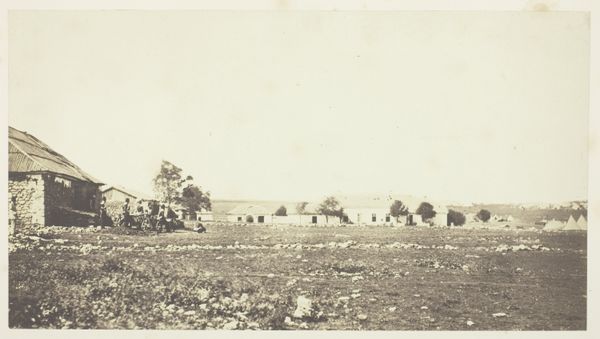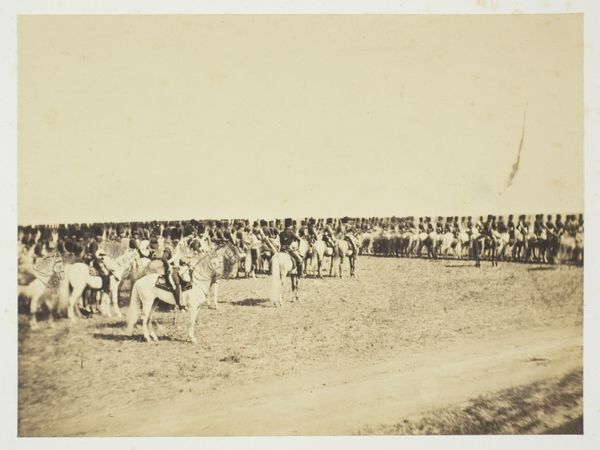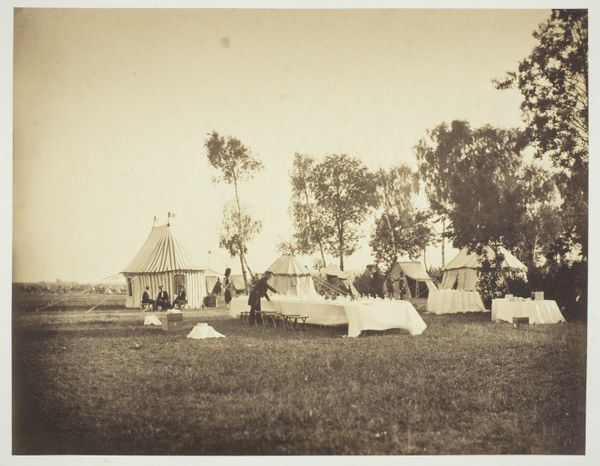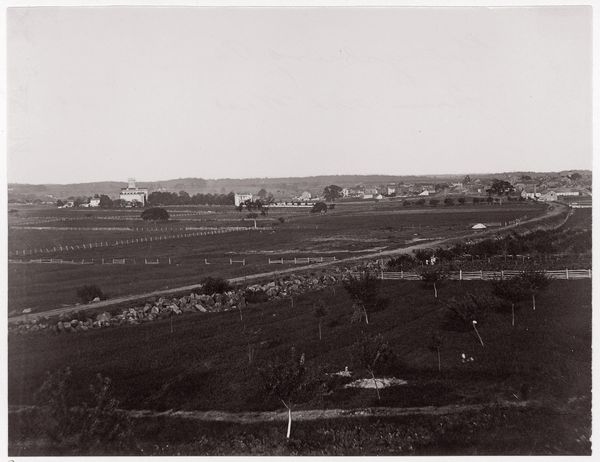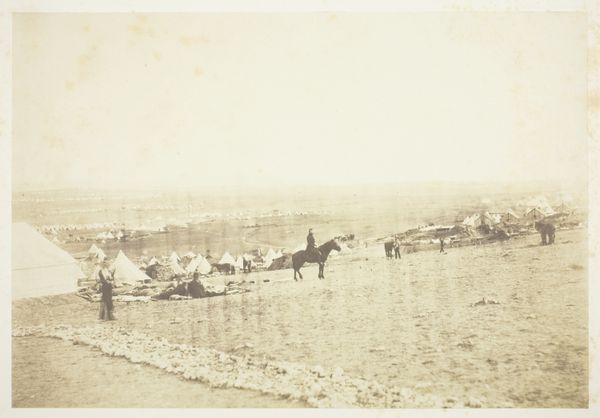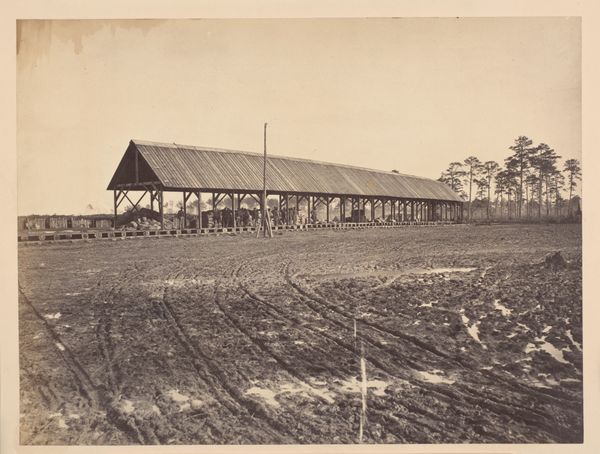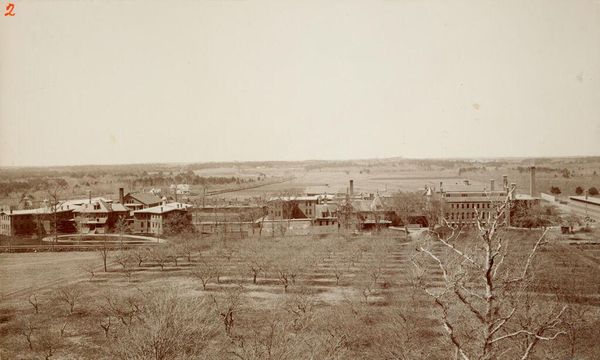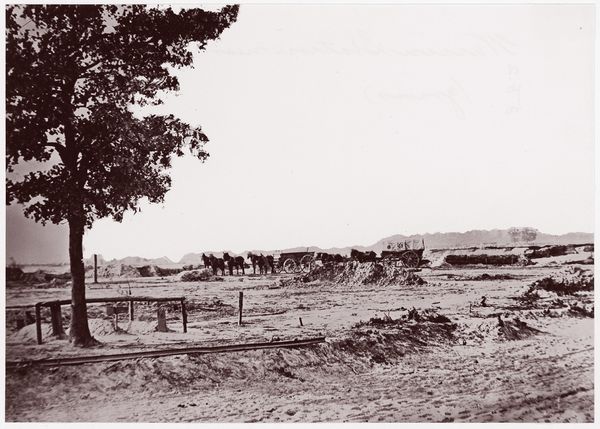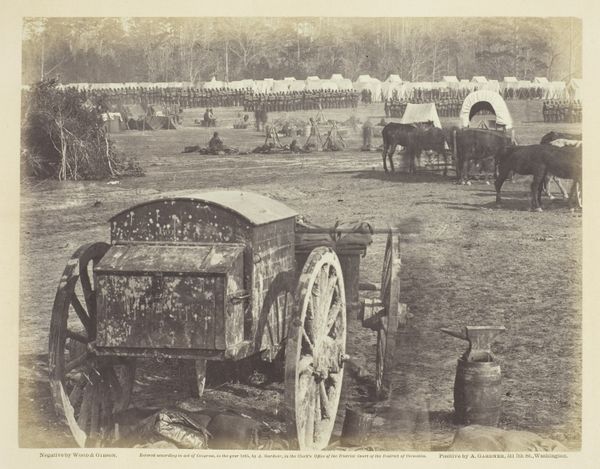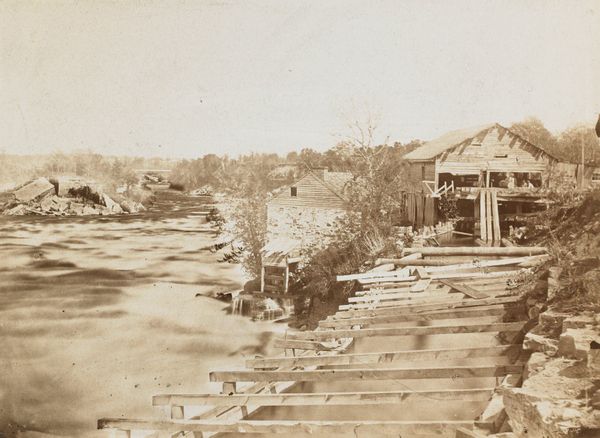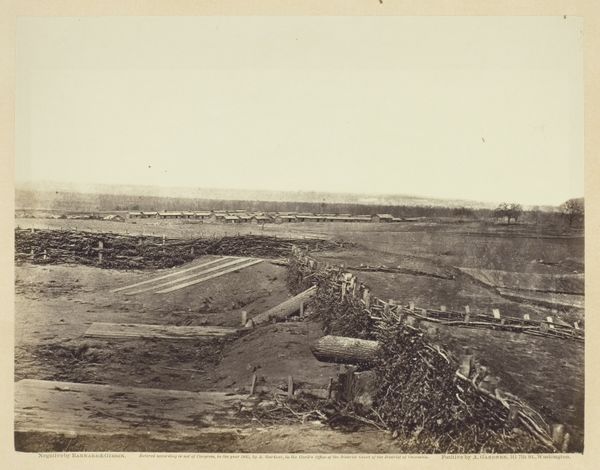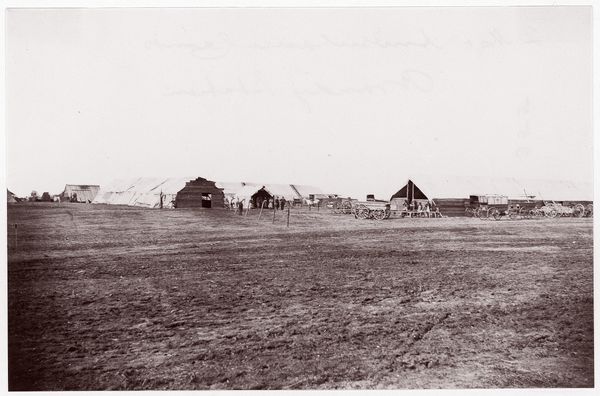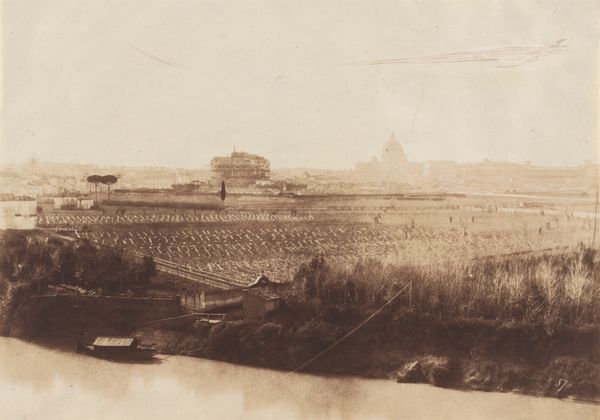
photography, architecture
#
landscape
#
historic architecture
#
traditional architecture
#
photography
#
city scape
#
monochrome photography
#
architectural drawing
#
cityscape
#
genre-painting
#
architecture
#
monochrome
Dimensions: 6 1/16 x 8 1/4 in. (15.4 x 20.96 cm) (image)10 x 11 7/8 in. (25.4 x 30.16 cm) (mount)
Copyright: Public Domain
Curator: The first impression is one of ordered activity; it is such a tranquil scene despite what I imagine must have been a large crowd. Editor: Indeed, Benjamin Franklin Upton captured this scene, titled "State Fair in Fort Snelling" circa 1860, beautifully. He managed to showcase a wide gathering through, remarkably, photography. Curator: Yes, the tonal range achieves a beautiful aerial view. I note that Upton organizes the buildings’ edges around a vanishing point far behind the crowd to compress the recession of space in the distance. He also sets up this contrast between the rough surface of the shingle rooftop, set against the vast plain behind it. I feel as though the building itself and our distance to the fair beyond acts as a bridge. Editor: From a historical perspective, state fairs were hugely important in the mid-19th century. It represented a key intersection of agriculture, industry, and community. We can glean insights into the socio-economic landscape of Minnesota just before the Civil War. Notice how neatly everyone and everything appears. Curator: It is definitely true that there are interesting historical contexts behind fairs. However, from my point of view, such clarity also enhances a certain symbolic function—the orderliness in which it exists, perhaps, implies the potential for chaos being always lurking somewhere. Editor: Absolutely, there's always a tension in depicting organized gatherings, isn't there? There's something to be said here about control and representation, both artistic and societal. The photographer chooses to focus on industry instead of say, focusing on marginalized figures present, which would bring on a far more political overtone, I believe. Curator: And this sense of "progress," captured at this critical time, is itself a powerful statement. As viewers, our interpretation cannot happen separate from that knowledge. It creates such complexity! Editor: Precisely. Ultimately, a photograph such as Upton’s preserves a specific narrative while opening paths to interrogate unspoken dynamics within our history and aesthetic. Curator: Thank you, that was beautifully comprehensive! It's left me seeing entirely different compositional aspects for the better.
Comments
No comments
Be the first to comment and join the conversation on the ultimate creative platform.
